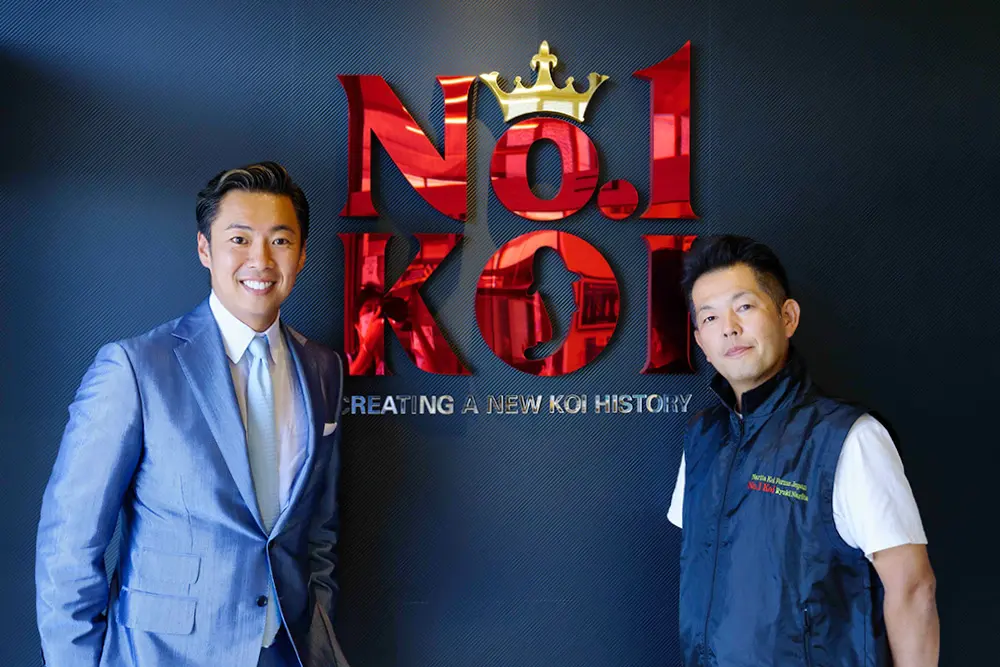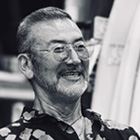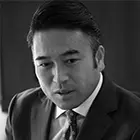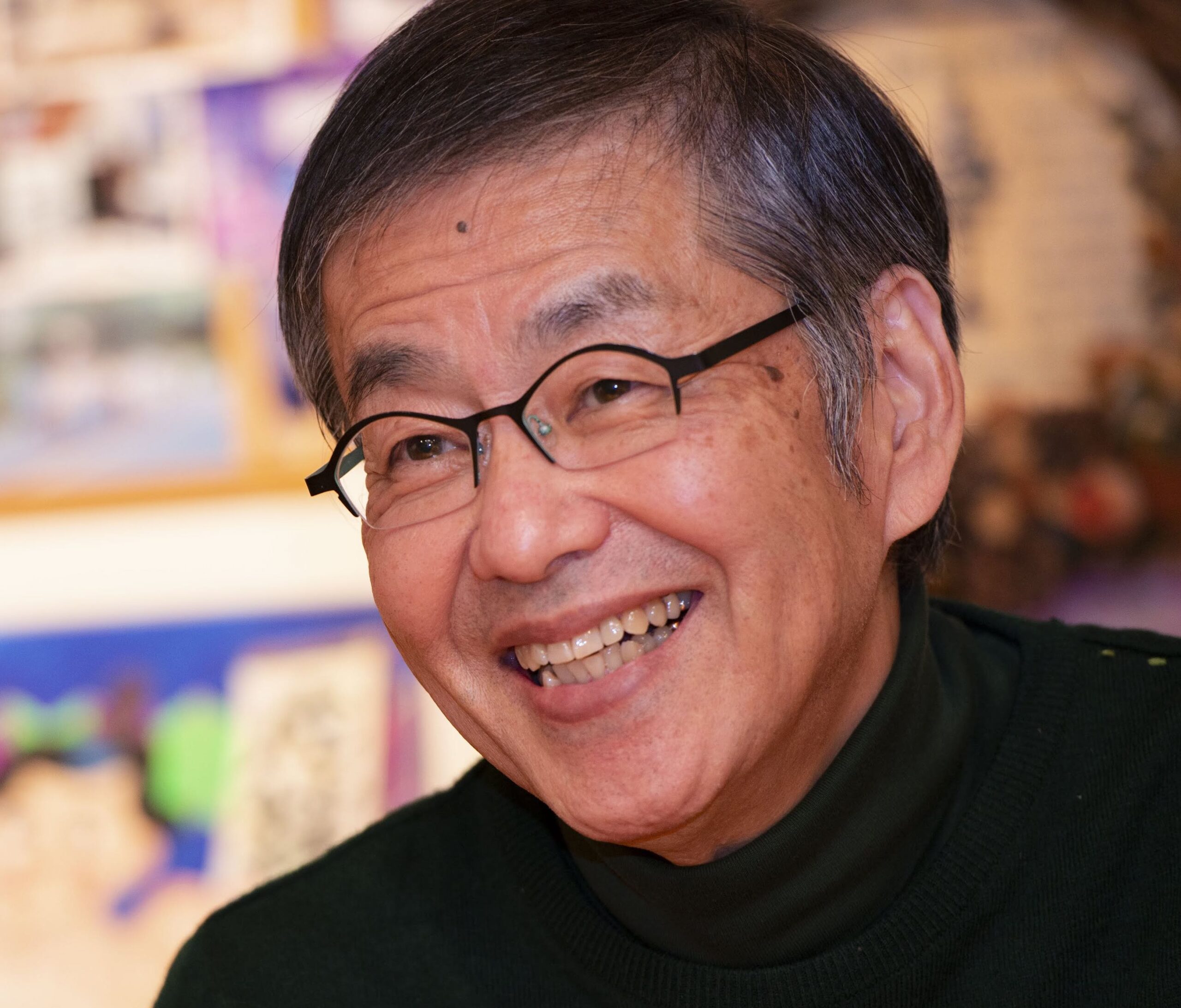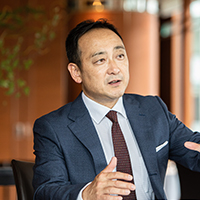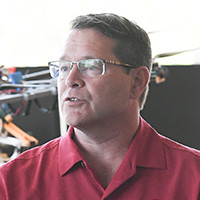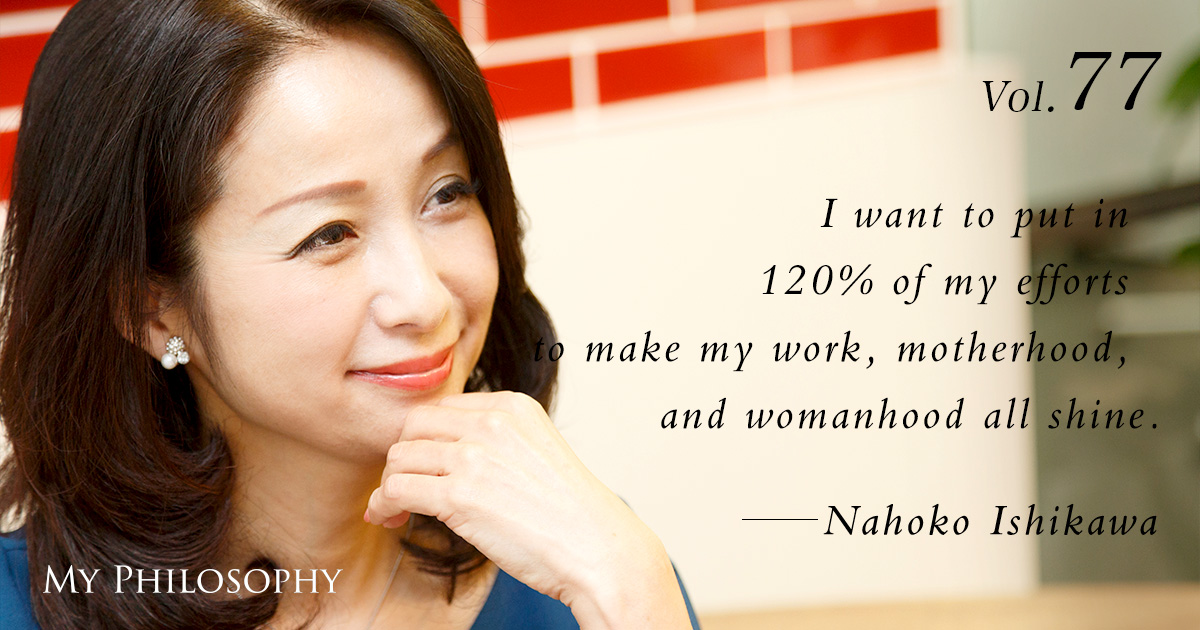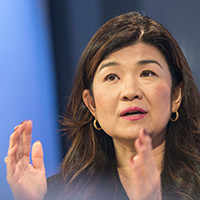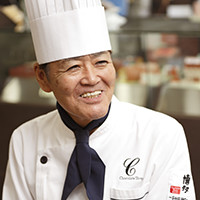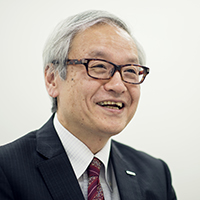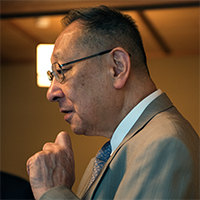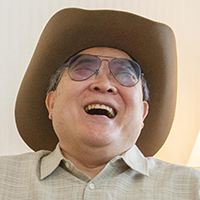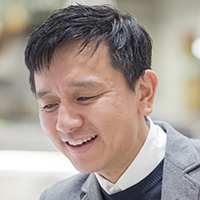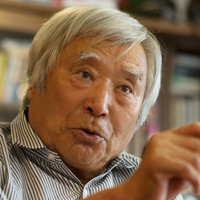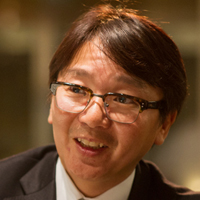
Narita Koi Farm, with its commendable track record, annually sells approximately 300,000 Koi to over 30 countries worldwide. At the 54th All Japan Combined Koi Show, a Kohaku, categorized under section 95 and nurtured by Narita Koi Farm, clinched the overall grand championship, solidifying its status as the world's number one in the realm of Koi. We had the privilege of speaking with Ryuki Narita, who vigorously promotes Koi both domestically and internationally, about the allure of these magnificent creatures.
Profile
Vol.106 Ryuki Narita
President of Narita Koi Farm Co., Ltd.
Born in 1974 in Aichi Prefecture, he graduated from a foreign language vocational school and then joined Narita Koi Farm Co., Ltd., a distributor of Nishikigoi (Koi) with top-class sales in Japan. In 1997, he spent a year studying in Malaysia and the United States. Upon returning to Japan, he began selling Koi in earnest. In 2006 and 2007, he achieved his long-held dream by winning the All Japan Combined Koi Show in Tokyo and the National Young Koi Show for two consecutive years. He sells "Nishikigoi," Japan's supreme beauty culture, to over 30 countries worldwide, including Japan. At the 54th All Japan Combined Koi Show, a Kohaku, categorized under section 95 and nurtured by Narita Koi Farm, won the overall grand championship.
Fishing and motorcycling are his hobbies. He is a father of five children. His favorite saying is, "Don't look back, there are no dreams behind you, face forward and charge ahead!"
The Narita Family of Koi Enthusiasts

My father’s family home has been running a fish farm in Toyama Prefecture with over 150 years of history, originally dealing with the breeding of edible carp. Carp are said to have originated in Niigata, where, due to a scarcity of animal protein sources, carp were a valuable source of protein. Released into rice fields during the summer, the carp grow large and eat harmful insects.
Occasionally, among these black carp, white or brown ones would be born, and events akin to show-off gatherings started to be held in winter to display these unique koi. As people brought their prized koi to these events, they must have wondered, “What kind of koi would result from breeding a white koi with a red one?” This led to the flourishing of koi breeding. All koi have their roots in the black carp, but now there are over 100 varieties. The emergence of red and white koi from black ones can only be described as a miracle.
Narita Koi Farm specializes in the sale of koi. There are trends in popular varieties and customers who seek unexpected types, so we currently trade with about 50 to 60 producers to increase our selection. I have considered getting into production myself, but decided that production should remain separate from distribution, as it’s not feasible to handle both. Producers have the artisanal role of creating koi, while we as distributors take the koi they create, finish them beautifully for sale, and provide thorough aftercare. We should distinguish these roles, as it’s impossible to handle everything from production to sales and aftercare. That’s why I have a strong desire to focus solely on sales.
The Koi That Customers Desire Are the Good Koi

I’ve loved river fish since I was little. I helped with my father’s work from when I was in elementary school and had customers who would only buy the koi I recommended. I understand their feelings now. Those involved in business inevitably have desires and make various calculations. To recommend the best koi to another customer, you might suggest the second-best one. But children don’t make such calculations. They honestly say good koi are good, and bad ones are bad. That’s why I think customers trusted the words of a child like me.
My father never taught me what makes a good koi. As a child, I learned that koi I had raised were “good” when customers looked at them and said, “This koi is nice, amazing.” I don’t believe that the good koi written about in books are necessarily good in reality. “The koi that customers want are the good koi.” Since I was young, I naturally sought out koi that everyone would say, “This is a good koi.” This sentiment hasn’t changed even now. While brand and production process are important, ultimately, what matters most to us distributors is not whether the patterns are good or bad, but selling koi that customers love. “Matching koi to customers’ needs” is something I’ve been thinking about since I was young, it seems.
Koi as a Symbol of Peace
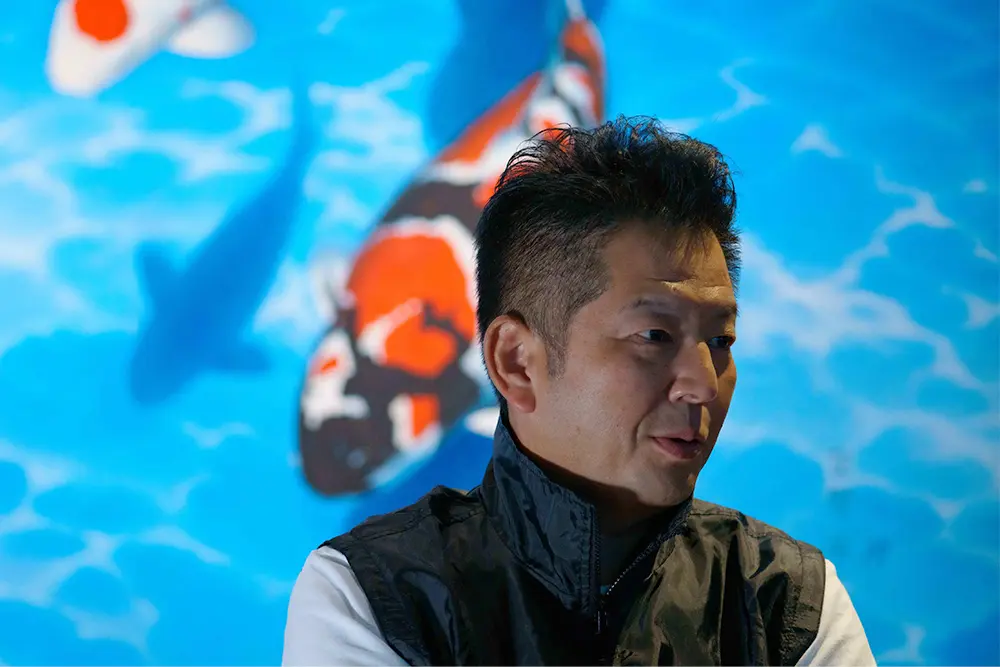
While most river fish die when the temperature exceeds 30°C, Koi can be kept in water temperatures ranging from 5 to about 33°C, making them easier to keep compared to other fish. Prices vary widely, ranging from 100 yen per fish to several million yen or more. Some fish have their own territories and become aggressive when another fish of the same species enters, but Koi do not fight among themselves and rarely attack other species of fish. Therefore, the non-aggressive Koi can be considered a symbol of peace. Some people say that Koi have a bad personality because they nibble on goldfish tails, but it’s not that Koi intend to attack goldfish; they just tend to nibble on fluttering objects. Among goldfish, Wakin do not have fluttering tails and have a similar tail shape to Koi, so they are not nibbled on.
Koi can remember human voices and footsteps. Koi do not get startled by the footsteps of the person who usually feeds them, but they may show a startled reaction to the footsteps of other people. If you clap your hands before feeding them at the same time every day, Koi can learn this behavior in about three weeks. Although Koi are a familiar presence for Japanese people, most people do not know much about them, and perhaps foreigners know more about Koi than Japanese do. There is an image that Koi keeping is a hobby of wealthy people living in mansions with garden ponds, which is very unfortunate.
The Shocking “Beni Kikokuryu”

For me, the charm of Nishikigoi (Koi) is that no two are exactly alike. Even a single-colored golden koi will have a unique scale pattern. The most astonishing variety I’ve encountered is the “Beni Kikokuryu”. It is the only variety besides the traditional top three (Kohaku, Taisho Sanshoku, and Showa Sanshoku) to have won the overall championship at a Koi show. Normally, black overlays on red, but for this variety, black crisply outlines the red, creating a mesmerizing effect. In fact, this pattern reached its peak of beauty momentarily during the show. Koi patterns change within days or even a week, so the shows are about the beauty of that specific moment. This Koi broke the industry’s conventional wisdom that only the traditional top three could win the overall championship.
Despite the high value of the traditional top three, producers of “Beni Kikokuryu” are fewer, and so are their numbers, meaning their prices don’t get as high, regardless of their beauty. However, their rarity attracts more attention from foreigners than Japanese, bringing new value to Koi. Some say that Japanese no longer have the means to keep Koi, but I disagree. Around 2010, there was a significant amount of Koi exported. Since then, interest in Cool Japan elements like Koi, bonsai, and Japanese gardens has grown, increasing inbound demand and boosting Koi’s popularity.
Having a bonsai makes one desire a Japanese garden, and with a Japanese garden comes the Koi. The popularity of Koi has risen, and as a result, Japan’s production can no longer meet global demand. When supply falls short, prices rise, and as more people become interested in Koi, the demand for better Koi grows, leading to an increase in foreigners participating in Koi shows. It’s not that fewer Japanese are keeping Koi; rather, the number of Koi enthusiasts overseas has grown, challenging Japan’s Koi industry.
China’s Koi Production Catching Up with Japan

Currently, Japan leads the world in Koi production, with about 500 producers, compared to around 1,500 in China. Even if the average level is higher in Japan, I believe the top three producers in China could rank within Japan’s top ten in terms of skill. China’s top-class producers buy high-quality, expensive Koi in Japan to use as broodstock. While luck and taste play a role, pairing superior male and female Koi increases the chances of producing excellent offspring. Top-quality parent Koi are increasingly being taken to China, though a significant gap between Japan and China still exists. Even if a pairing is successful now, if the male dies in three years, that lineage ends. Japanese producers, having multiple males and females of the same lineage, can continue producing similar quality Koi even if their first choice dies. Japan’s tradition and skill in producing quality Koi continue.
While buying Koi from Japanese producers and selling them as part of Japanese culture is preferable, meeting customer needs is our priority. If customers prefer Chinese Koi, I’m inclined to source and sell them. Although I wish Japan remains the leading Koi producer, I’m not solely committed to Japanese Koi. Providing what customers want is always my goal.
Expectations for the Next Generation in the Koi Industry

The challenge for the entire Koi industry, including producers and distributors, is “human resource development”. Those who work with me gradually adopt my way of thinking about selecting good Koi, but it’s not necessary for everyone to agree with me. Even if our fundamental approaches are similar, preferences can differ, like favoring brighter reds or rounder scales. Unlike restaurants where recipes can standardize tastes, Koi production can vary significantly from one producer to another. It’s difficult for any producer to maintain the exact same quality for decades.
I haven’t taught my son anything, nor do I plan to. However, I do wish to pass on the business to him as soon as possible. Having already graduated from middle school and taken up this work, my son has his own customers, but he needs to find those who match his style. He must also excel at Koi shows and understand what makes a Koi universally appealing. Identifying and cultivating such Koi, and purchasing Koi that match his preferences from producers to create a clientele, is essential.
This is something I must not teach him. If I did, he might only appeal to my customers. For the business to grow, he must independently develop a sense for quality Koi that attracts new customers. The key is how consciously he engages with his work and accumulates experience.
Bringing a Fresh Breeze to the Industry
It’s necessary for the industry to broaden the base of Koi enthusiasts going forward. The image of Koi keeping as a hobby for the wealthy makes it seem inaccessible to many. Without making it more appealing to a broader audience, the domestic market will continue to shrink. To increase enthusiasts, we should think of new ways to showcase Koi. Recently, Art Aquariums, presenting goldfish as art, have become a big topic. Despite criticisms within the goldfish industry for being unorthodox, the media coverage and public attention it garnered were beneficial. Even with its downsides, it significantly changed the public’s perception of goldfish, undoubtedly increasing interest in them.
Like the Art Aquarium, I believe it’s not just about showcasing Koi but also creating art with Koi as a material. While Japanese may resist this idea, foreigners often embrace them with surprise and joy, saying, “So this is how it is.”. Perhaps Japanese overemphasize preserving tradition. I was moved by a hit product abroad: a plastic soccer ball with holes, filled with Koi food and tossed into a pond. As Koi gather to eat the falling food, they appear to be playing soccer. It would be great if such playful approaches spread in Japan too. However, some in the industry prefer to maintain its closed nature. Slowly incorporating new ideas and approaches is essential, I believe.
Daisuke Sugiyama, with his unique ideas from being raised overseas, is crucial for the global development of the Koi industry. I dream of opening a Koi aquarium in Japan, complete with cafes, to introduce more people to the world of Koi and spark their interest. I believe that utilizing Daisuke’s flexible thinking and network could make this a reality. I look forward to your support in promoting Koi worldwide.
President of Narita Koi Farm Co., Ltd. Ryuki Narita


Mr.Ryuki Narita, congratulations on winning the grand championship at the 54th All Japan Combined Koi Show. This illustrious honor is a testament to the infinite love and daily rigorous efforts that Narita Koi Farm has poured into Koi over the years, as strongly felt through the interview. I express my renewed respect for President Narita’s endeavors in spreading the magnificent beauty of Koi worldwide and bringing fresh vitality to the industry. The attention garnered from all over the world due to a deep love and passion for Koi is indeed a major event for the industry. I sincerely wish for further development of Narita Koi Farm and the continued prosperity of Koi culture.
Location: Narita Koi Farm Co., Ltd. Editor: Daisuke Sugiyama Translation: Daisuke Sugiyama








